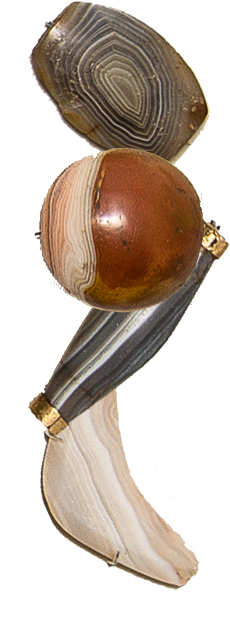Explore Beads
During the week of 30 March, Gabriel Prieto a doctoral candidate from the Yale Anthropology Department brought an assortment of beads from the Yale Peabody Museum to the IPCH Digitization Lab for 3D scanning and reflectance transformation imaging. The collection donated by the Bead Society of Greater Washington includes intricately carved ivory and large Murano glass beads from a still existent workshop in Venice. The aim of this digitization project is to create Web-hosted visualizations of the beads for virtual exhibition in a digital repository accessible by the public, as well as to showcase the research and imaging facilities available to students and researchers at Yale.
The first method of digitization applied was 3D scanning. For this, the beads were securely placed on a turntable in front of a triangulation laser scanner. The scanner emits a series of beams that fall across the surface of the bead and detects the location of thousands of points corresponding to the morphology of the bead. Once points have been captured for the entire geometry of the bead, scans can be aligned to one another to yield a digital likeness. Color information was captured with the scanner as well. The 3D model can also be viewed without any color texture in order to best visualize the geometry.
View Front Side 3D Scan of YPM 295687
View Back Side 3D Scan of YPM 295687
The second method of digitization was reflectance transformation imaging, a method of capturing how the surface of an object interacts with light. A thin, elongated carved ivory bead was chosen for this imaging method, due to the complexity of the human and animal carvings on both sides. The bead was placed underneath the RTI dome for imaging. This dome is equipped with 45 lights placed along 4 different tiers at different known locations. A digital single lens reflex camera at the top of the dome then captures one image for individual projection of light. At the end of a three-minute acquisition, 45 images with different shadows and highlights have been captured. These images may be post-processed to yield an interactive visualization file, where the user may manipulate the direction of virtual light sources, to cast light along the surface of the object. The raw data can also be processed to yield 3D models with very detailed fine-grained geometry of the surface of the object imaged.
View Front Side RTI Scan of YPM 295687
View Back Side RTI Scan of YPM 295687
Together with the IPCH Digital Imaging Specialist, Gabriel scanned, imaged and post-processed to yield final products. These 3D models and visualizations will be incorporated into a Peabody website, not only to showcase the unique specimens, but also to promote digital projects. The IPCH Digitization Lab is a powerful resource at Yale, aimed at supporting digital documentation, research and dissemination of the unique specimens of Yale's museum and galleries.
Special thanks to Rebekah DeAngelo of the Yale Peabody Museum.



